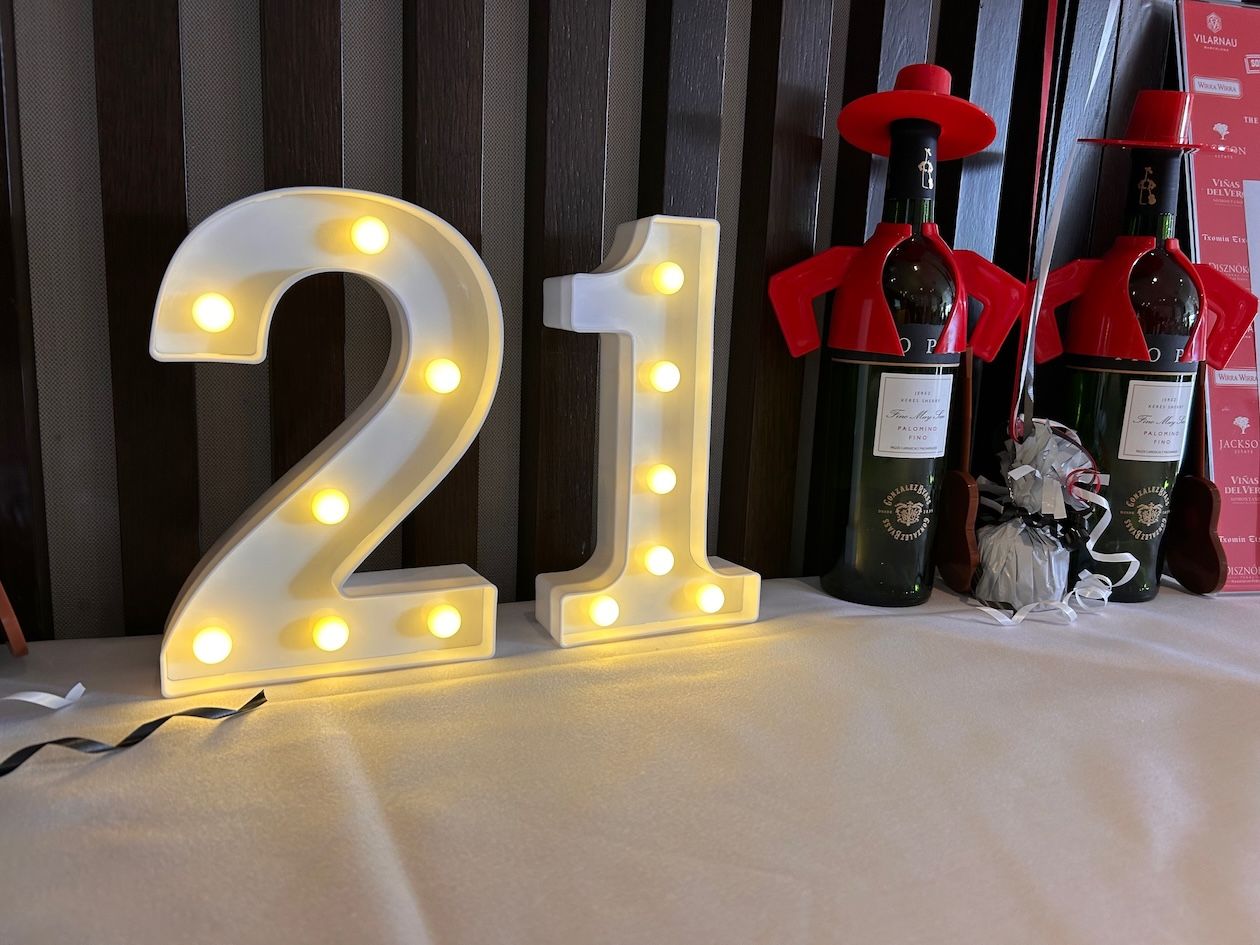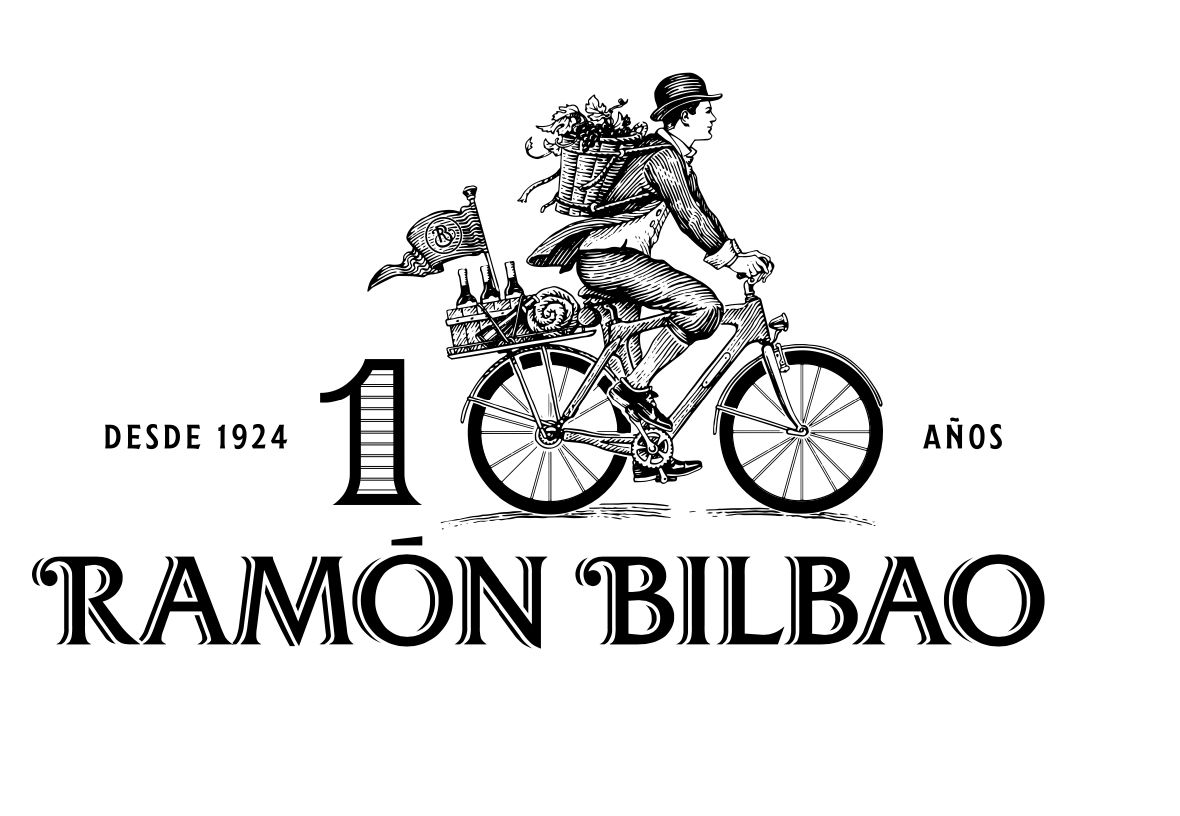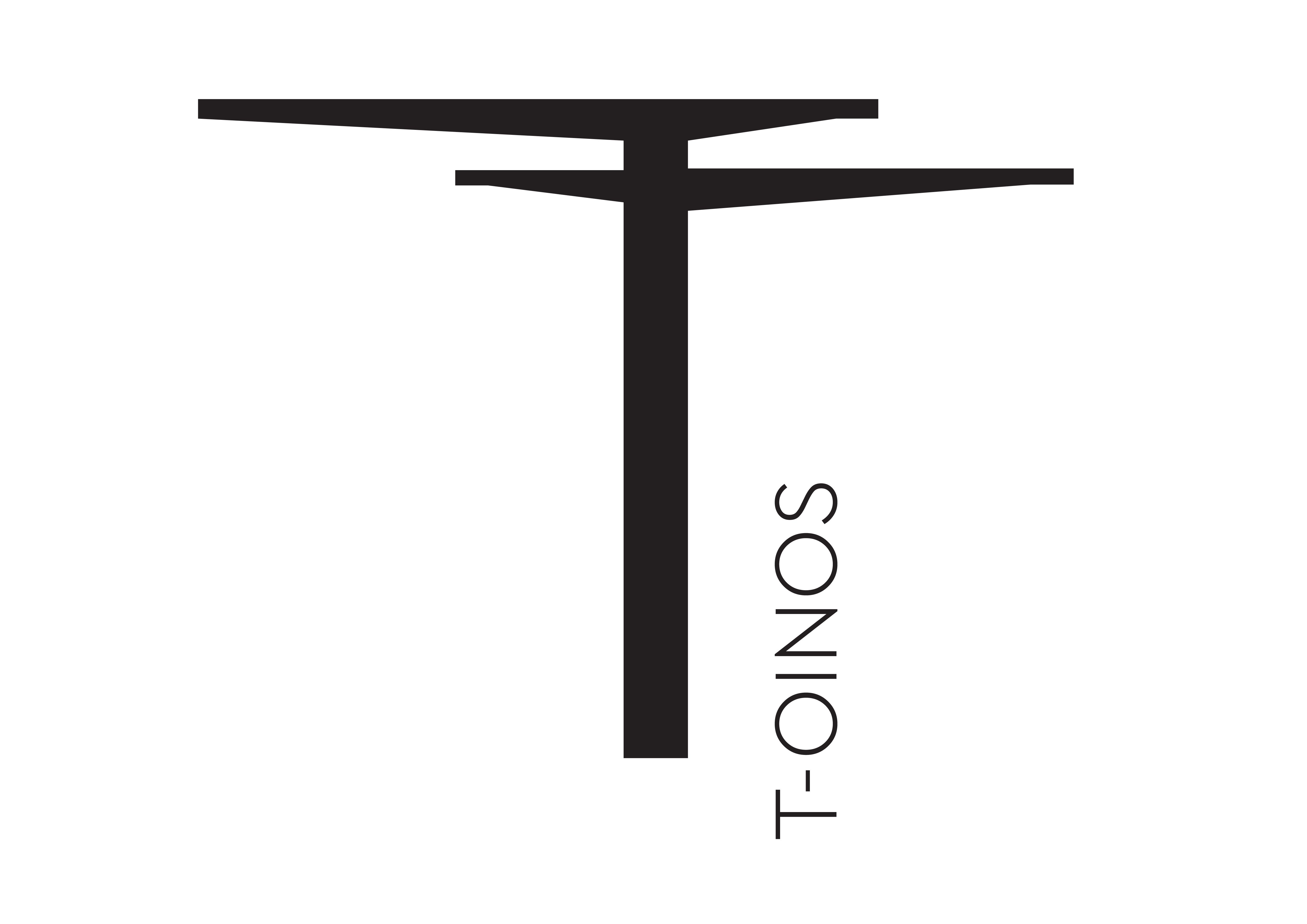Buyers and producers can sign up to the APVSA Digital Wine Fair on June 28-30 where they can come together to discuss wines and deals in customised 3D booths. For more details click here.
Can you tell us about your own background in wine?
I was born in Belgium from a Spanish and Italian family. I moved to Canada in my twenties to visit the country. I saw an opportunity in assisting French cheese mongers to import their products. It was hard to import cheese to North America. The business was successful thus the cheesemongers introduced me to several wineries and to do the same. Cheese and wine go along. I was also a radio columnist in Montreal, where commercial agents asked me to promote their wines on the radio and felt the need to self-study wine. Today, there are so many certifications in wine that were not available 25 years ago.
I am a self-made man and do not feel shy of it. With my other passion – music – it was easy to combine the two and started to do talks about classic and jazz music with capsules of wine. I spent endless nights learning about the wines to present on the day after. From there, I travelled around Europe to meet hundreds of winegrowers.
Can you explain how and why you set up the APVSA and what were its initial goals and targets?
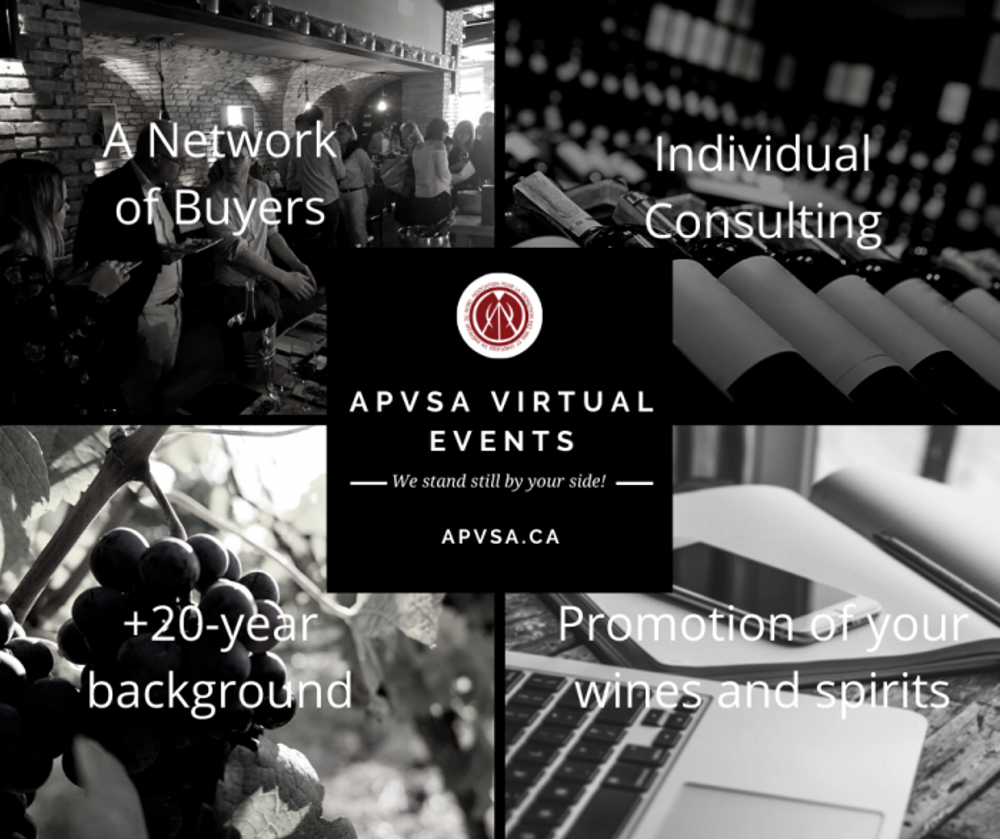
APVSA has grown in the events and services it can offer buyers and producers
In 2000, Antoine – friend and business partner – and I, founded a company to promote wine and cheese in Québec and the rest of Canada. Antoine decided to stop the partnership after an accident. In 2005, I founded a non-profit association to develop the wine and spirits promotion activity and put a stop to the cheese. European and international winegrowers joined the association. They were from Chile, Argentina, Italy, Croatia, Romania and we performed B2B tasting roadshows across the Canadian provinces.
Ten years after, I hit the roads of the United States and that was tough. At the beginning the events got a few buyers. Once there were zero buyers. This was a terrible feeling, but perseverance, and resilience, proved me right. The importers and distributors connected with our winegrowers and closed hundreds and hundreds of deals. It took time to have tasting rooms crowded with buyers and could afford asking some people, non-buyers – who only attend to get drunk and stick to the buffet, to leave.
The US was a highly competitive market, and my English was poor. It took me 10 years to build a reputation, proving the quality and the consistency of the selected wines and spirits.
If the association lasts today, is because it filled a void in coaching hundreds of winegrowers to make accurate offers in line with the buyers’ needs. This gives good results. In over 20 years, the association organised thousands of tastings during roadshows, selections and since last year, hundreds of virtual events.
In 2018, took place the first roadshow in Mexico, another in 2019, and early 2020 just before the health crisis where wine has a hard competition with beer and distillates.
What are the main services that you provide your members in US and Canada and Mexico?
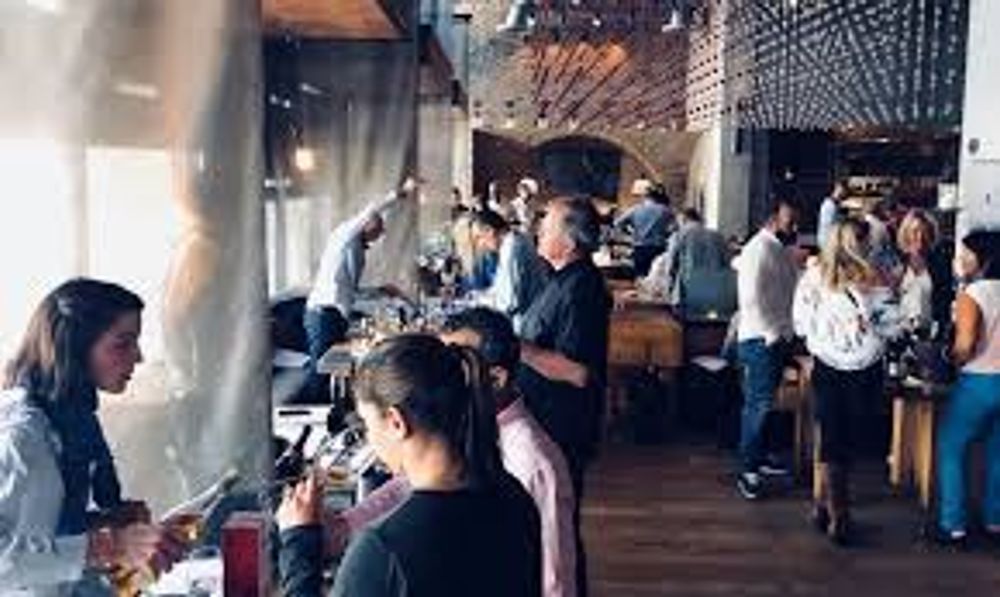
We provide two types of services, for the buyers and for the winegrowers. For the buyers, we present meticulously selected quality wine & spirits. For the wineries, we perform a thorough analysis of their capacity to produce and to export, to define their target market. We coach them to become better business partners. They need to understand the market. Many winegrowers want to export to North America, but very few have clear objectives, nor understand the difficulties that buyers’ face daily. Buyers thrive in a competitive world full of obstacles such as tariffs, taxes, complex systems, and laws resulting from the American and Canadian prohibitions. There are logistical problems between countries, states or provinces, fluctuating exchange rates, ruthless competition, a high turnover in staff and so on.
Finding the right wines and the right suppliers is like looking for a needle in a haystack. There is so much choice. Often, winegrowers’ offers present prices, quality, packaging, reputation, rating, payment terms, transportation and promotion which are not in-line with the buyer’s selection criteria.
On the other hand, our wine growing members have crucial needs. Our team assists them in setting the stage for an event, to finding qualified buyers, on some legal matters, branding and marketing, the language gap offering translation and interpretation services. Doing business abroad has risks and there are a lot of scams in the world of wine at all levels of the industry. We are here to connect professionals and to prevent conflicts between business partners.
At the APVSA, we are like matchmakers setting-up events and working to make things last. Year after year, the novelty is brought by the changing environment: world conflicts, consumption trends, new products, new wine countries, new packaging, new channels, climate change.
You have also taken your events online during Covid-19 and have a major digital fair taking place later in June – how is it going to work?

We started the virtual events in June last year with “Pink Fluid” to present rosé wines. It was late in the year for rosé sales, but it was a test that worked well, and attracted buyers curious about the format. In July 2020, took place “La Part des Anges” or “Angels’ Share” featuring distilleries from Europe, United States and Canada showcasing their artisan whiskey, brandy, cognac, vodka, mezcal-like spirits, gin, and liquors.
This was followed monthly by BoheWine Rhapsody, Sparkling Trade Days, Bacchus’ Muses showcasing wine produced by women winemakers, Amphorae, Rare Grapes and Rare Wines. The latter was a blast for buyers in search of niche wines, including the wineries invited by Odile: Château Bargylus and Château Marsyas. “A WineClock Orange” featured skin macerated whites.
We put so much effort on this format of events, and by the end of the year, we were exhausted. The take-away is that it worked despite the scepticism of many professionals of the industry. Deals from these themed series are still being closed and the truce on tariffs has something to do.

APVSA has already held a number of successful digital fairs
The first trade fair with virtual booths took place on January 2021. This allowed us to connect international buyers from 28 countries with over 60 exhibiting wineries. That was a test. And despite the apparent steadiness of an online platform, the orders arrived a week after the closing. For some the wines have not even been tasted. The buyers rely on both the quality of our selection and prestigious appellations.
For the June edition, we are improving the event with the lessons learned. We know where to put our efforts to avoid any type of frustration caused by the virtuality.
The concept is simple: visitors and winemakers will engage through the Virtual Exhibition Hall composed of virtual booths and pavilions by country, regions, and style categories such as “Green Hall” to present biodynamic, organic, natural, and vegan wines; “Pink Fluid” for rosés; “Angel’s Share” for spirits and distillates.
At their booths, winemakers and distilleries will present their wine estate, vineyards, wines, technical sheets, and enotouristic facilities.
Attendees, composed only by wine and spirits trade professionals such as importers, distributors, retailers, commercial agents, critics, wine journalists and wine writers, will interact with the winegrowers, collect information, and order samples.
The cons of this type of events: no clinking of stemware, no pats on the back, no dinners with the co-exhibitors and friends, no immediate tasting. But there are a lot of benefits: wineries who could not afford to travel abroad can reach buyers from around the world from their vineyards. There are much more samples shipped to buyers than ever before. People stay at home and bottles reach qualified prospects.
Who is the fair targeted at in terms of exhibitors and the delegates you want to attract? Is it only focused on buyers and producers working in the US and North America and Mexico or can other international buyers take part?
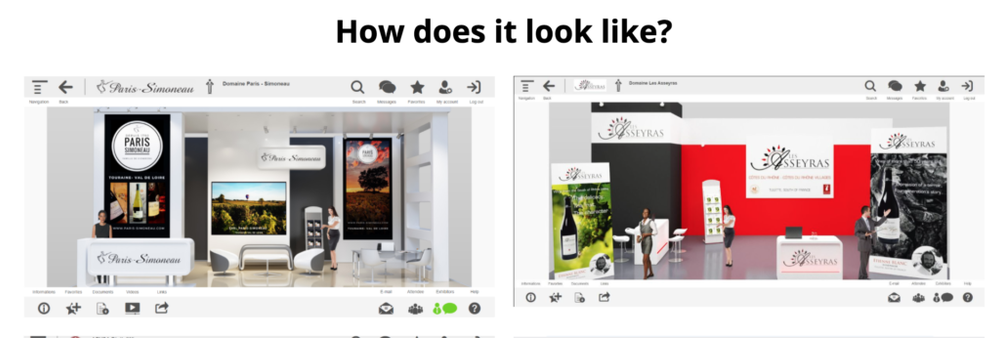
Here is an example of the 3D booths that buyers and producers will use during the APVSA Digital Fair in June
The exhibitors, members or guests mainly come from Europe, most are French, Spanish, and Italian but we also target producers from all the world’s wine regions to give to the association an international positioning.
The added value for the buyers is that in 30 minutes they can identify suppliers sensitive to their issues. During regular workshops, we train the winegrowers to prepare them for export, to marketing, to have an offer consistent to their strategy, to build a financial plan. We train them to become proactive and be ready to change their packaging, offer private labels. The word “partnership” should have a true meaning.
The visitors that we directly invite are North American: United States 54%, Canada 31%, Mexico and Caribbean countries 15%. With online events, we opened an international window that we were not expecting. At least not at that level, buyers from the United Kingdom, Scandinavian countries, the Netherlands and France were the revelation. On the January trade fair, we received visitors from 28 countries from all the continents. So yes, our events are open to all wine and spirits professionals across the globe. No discrimination and the more the merrier.
Can you explain the format of the fair – how it is going to work in terms of business meetings and chance for producers to show their wines and get buyers to sample?
Ahead of the event, we send the invitations to the buyers, issue press releases in English, French, and Spanish, we share the wine list evolving every day as the exhibitors register. At the same time, we schedule 1-1 meetings with interested buyers to ensure the individual tastings with the wineries. Things work best for producers who shipped their wines ahead of the event or, are ready to ship. Proactivity is key. Step by step is:
- Exhibitors previously select the targeted markets (country, state/province, city) and type of buyer (importer, distributor, monopole, private import);
- APVSA circulates the preliminary list of exhibitors taking part on the trade show to the North American traders, later, we send the catalogue of wines & spirits to the registered buyers;
- The samples are shipped to a hub in the United States and Canada ready to be redistributed. Some wineries have their stocks overseas.
- The qualified buyers select the products that fit their portfolio and order the samples directly to the producer, who gives the order to ship.
- After tasting the samples, traders and winegrowers start discussions during scheduled meetings. This can be before, during and after the event.
How about the content and what masterclasses and sessions you are running at the fair?
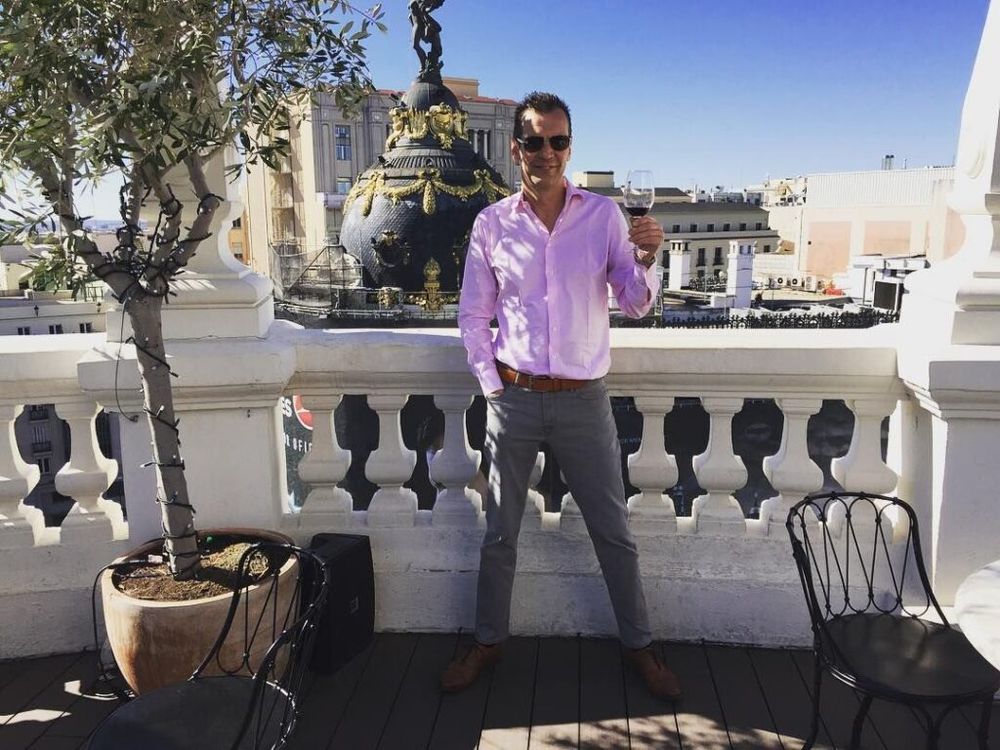
Pascal Fernand on duty at an event held in Montreal
We are still building the conference programme based on the final number of exhibitors.
Some winegrowers may be shy because they are asked to become actors, speakers in a foreign language, master the videoconferencing tools, hire product photographs or designers, create beautiful slide decks to present their wines, their vineyards, and an offer. The programme is updated in real-time.
The masterclasses and sessions are live videoconference. Pre-taped sessions do not attract the audience. We want the event to be lively as far as possible.
We planned round tables exclusive to the buyers and others to winegrowers. This is capital to understand their needs and concerns. Intelligence is helping us to fine tune our services. Buyers need to develop their distribution network, find channels of distribution, find sellers, create partnerships across the country.
During the conferences, the winegrowers present historical facts as well as updates on their appellation. On day one, Danielle Gibault will talk about the graffiti left behind by the troops who stationed in her village during World War I. She will also present a young appellation. Another winemaker will explain the certifications in France applied to their vineyards. A rosé producer will make a rosé de Provence masterclass. We will also have a winegrower presenting Austrian grapes, Grüner Veltliner and Zweigelt. Pradorey’s chief executive, Fernando Rodríguez de Rivera will talk about their ancient 150 years old amphorae they use for their wines.
The “Zoom on the Regions” is a speed-dating like event where the wineries pitch a snapshot of their region, key information about themselves, focus of their appellation, their wines and special offer in a six to eight-minute slot. Last year the buyers found that format convenient. It is straight to the point. And if anyone reading this note has interesting topics to share, they can reach me to become a speaker.
What inspiration have you taken for the fair from other events and from what your producers and buyers are looking for?
The inspiration and motivation came from the tough situation that our wine growing members and us, were about to face early last year. Our main activity is planning tasting roadshows. How to go ahead when travel, food, in-person gatherings were prohibited, and flights were stranded? On the other hand, importers were confronted to similar issues.
On both sides, they were hit by the tariffs and a pandemic closing the HORECA and locking everybody at home. We worked for free not to let them down, but this could not last since we have rents to pay, fridges to fill and families to feed. We spent sleepless nights from March to November 2020 in overthinking mode.
To all of us, the objective was to keep the wine and spirits flowing.
How has the last year been for you and your members and what have been some of the biggest changes and responses you have made to the pandemic?
In June 2020, took place our first virtual event. Odile Charny, based in the Mexican Caribbean, joined the association end of 2018. She has been working remotely since the early 2000s. With her broad international experience, she allowed the association to move fast to the virtual events and to preserve the promotion of our wine growing-members in North America. According to our network of buyers and winegrowers, we were among the first to do it. Others arrived by the end of 2020. Today the competition is greater, but we bet on the close relationship that we build with our stakeholders.
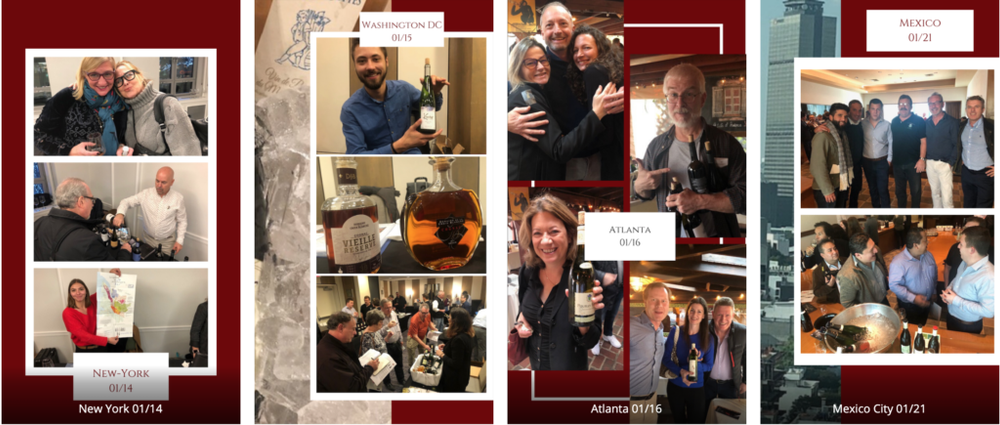
The APVSA has helped create a community of buyers and producers around the world
One of our members set up her stage by arriving in front of the webcam while driving her tractor. It was a windy day of Fall, and the noise was disturbing. When going off the tractor she fell. She stood up laughing so wild that she was unable to perform the presentation and we got to move to the next presenter. She did not get hurt. Despite all, she was contacted by the buyers and closed deals. This was an unexpected way to “differentiate” from the competition but created a memorable emotion.
Another vintner invited the buyers to a balloon tour over the vineyards and the Alps, another to ride on road bicycles on the track of the Tour de France®. Other winegrowers connected to the buyers by talking about their hobbies: golf, tennis.
Looking back in time, the transition was difficult. We doubled or even tripled our efforts. We became interpreters, presenters, moderators, IT teachers, and in the end, it pays off when the winegrowers let us know that they are closing deals. This is our reward: seeing them succeed. At the APVSA, we will not be rich and we bootstrap every cost, but we love what we do.
Do you think online trading is going to stay and become a much bigger part of how the wine industry does business?

APVSA’s Instagram feed is another way it can help promote its producer partners
The virtual is not ready disappear and we have plans to combine in-person and virtual events. We are already finalising the hybrid tasting roadshows to be disclosed soon. There will be more online events, events combining virtual and in-person, an economy of scale in the prospection, less travels, chances to develop global prospection and better ways to communicate and do business. We will lower our CO² print. We will deal with more stronger and adaptable partners. Many producers and buyers simply dropped the towel: “No thank you, I am not into the virtual stuff”. Fine. Good luck to you. There is no way that the wine sector will become 100% like before the pandemic.
What other ways do you see you changing how you work as well as doing online fairs?
At the APVSA, we tend to remain agile, adaptable, and innovative. We are confident in keeping this agile mindset in the coming months and to adjust to what faith will bring. There might be a few short trips, in-person tastings and selections. We will keep doing videoconferences or live promotion meetings.
The sales techniques will be revamped. Creating a good first impression is different online with noises and occasional glitches. Forget about making eye contact. Yet we can still open with a sincere, friendly greeting and give a nice, warm smile. We are training the winegrowers in new ways to pay attention to the customer, adapt the offer to the circumstances. We prepared workshops to better target their prospects, limit the mass mailing, analyse e-commerce companies whose sales went up from 300 to 500% depending on the country.
The hybrid model will be beneficial for those who were less talented with their sales skills. Things are more straightforward, more factual. We are preparing for a new form of salespeople. Hopefully more effective.
Anything else you want to say?
We will focus more on the buyers’ needs. We know they also have hard times, not only during a crisis. What is a good piece of news, is that wine keeps flowing with an increasing number of samples being shipped around the world. And the best part of my work is that we assist professionals while having fun and feeling useful.
- To find out more about the APVSA click here.
- To sign up and find out more about APVSA Digital Fair between June 28-30 click here.


